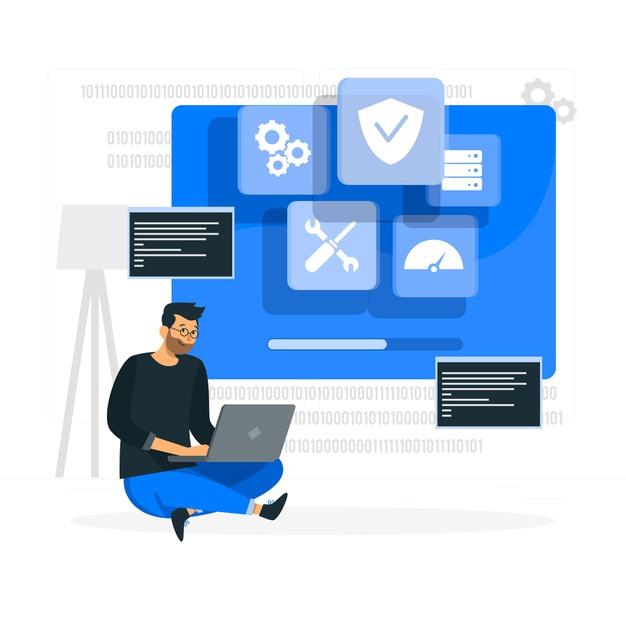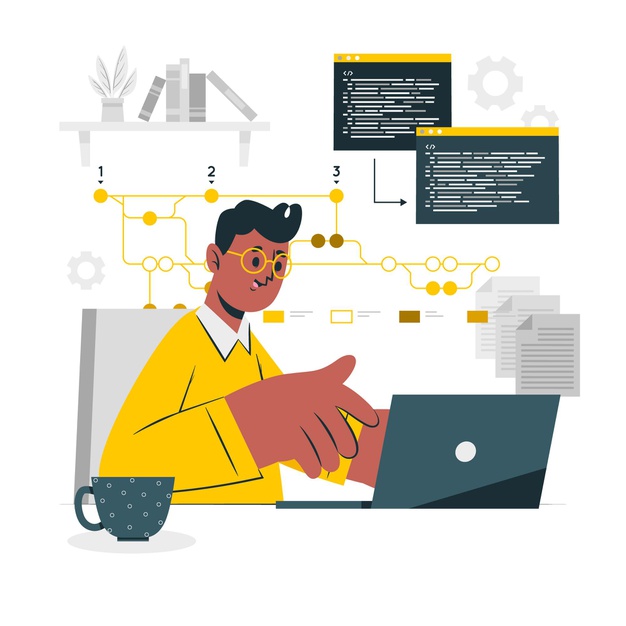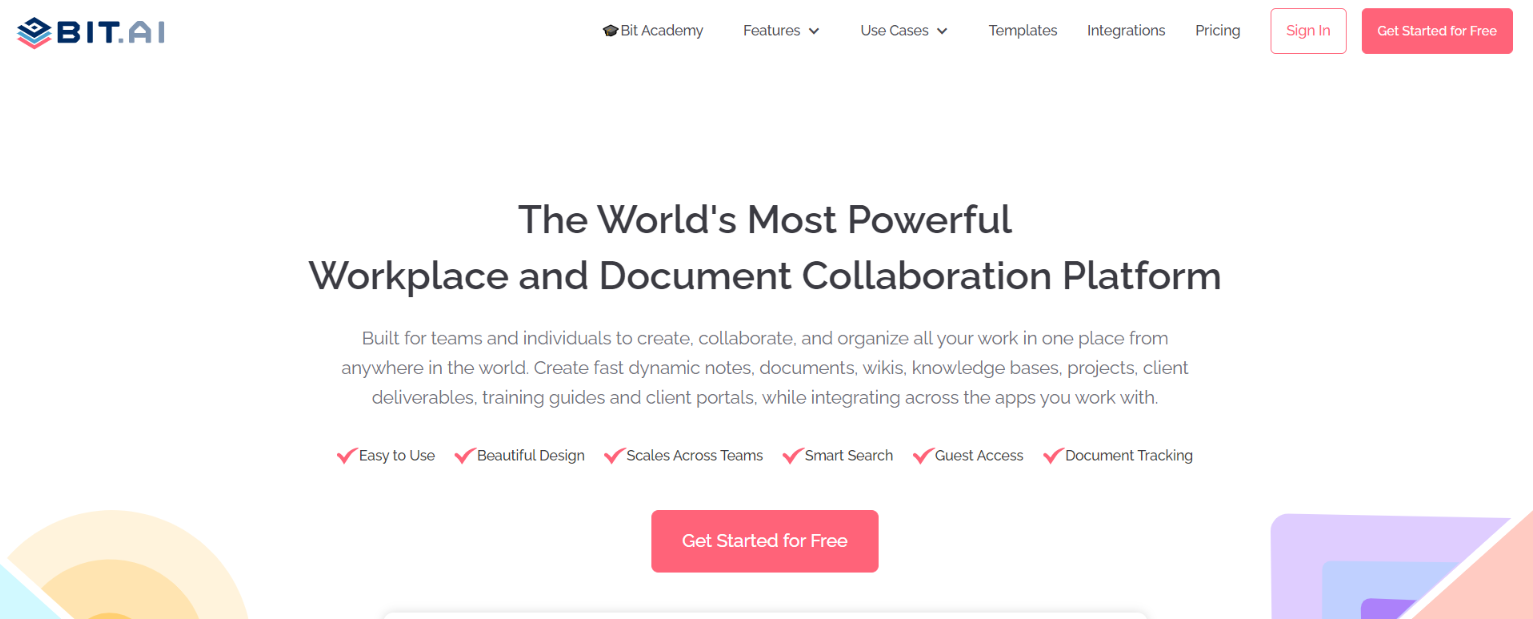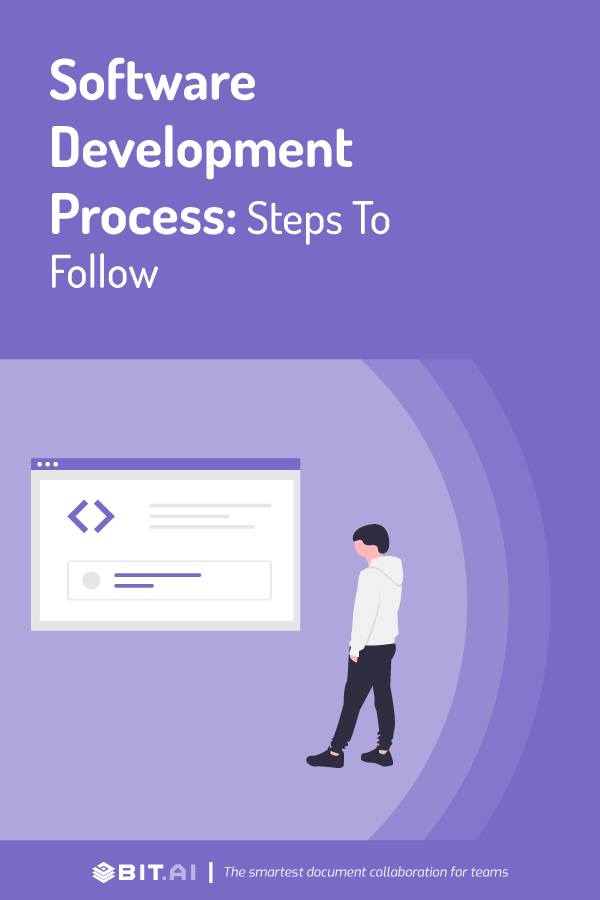“Fall in love with the process, and the results will come.” – Eric Thomas
Think of an activity that is not powered by some kind of computer-related process.
A little hard, isn’t it?
Software is everywhere today.
It leads our every step.
It is a part of everything we do.
Organizations are gearing towards software-driven innovation more than ever. Be it for improving internal business operations or presenting software as a business model.
To create a great product, it’s imperative to understand the entire software development process. A poorly defined and faulty process may compromise the product’s quality and even result in significant delays.
Before we move ahead, let’s understand what software development is.
In other words, the process of building software or application to cater to business or personal needs is called ‘Software Development’.
 While developers write code to develop any software, coding is only a part of the giant process known as the ‘software development process’ or ‘life cycle’ The process involves a number of distinct steps that help teams produce solutions of the highest quality, lowest possible cost, and in the shortest timeframe.
While developers write code to develop any software, coding is only a part of the giant process known as the ‘software development process’ or ‘life cycle’ The process involves a number of distinct steps that help teams produce solutions of the highest quality, lowest possible cost, and in the shortest timeframe.
That’s why efficient software processes and foolproof project management strategies are so important to any software development project. Here are the seven key steps that are part of every software development process:
The agile methodology, which we will be talking about today, is currently the leading method for building software. Like its name, agile methodology is a fast and flexible approach to software development.
According to a survey by GoodFirms, Agile has been considered as the most appropriate software development method. In fact, more than 61% of projects are done using this methodology!
Follow these Steps for Software Development Process:
1. Planning
The first step to any process is always planning. You might have figured out certain aspects of your project but you are going to need software engineering experts to create a final plan for your project.
The planning phase focuses on inclusiveness. The development teams come together to discuss the requirements of the software project. The product owner, the UX architects, and software engineers, and the testers prioritize requirements that need to be worked upon. Together, they form a blueprint for the team to follow and ensure the successful development of the project.
 The team talks about allocating human and material resources, scheduling the project, planning the capacity, estimating costs, and provisioning of resources.
The team talks about allocating human and material resources, scheduling the project, planning the capacity, estimating costs, and provisioning of resources.
Remember: This step is essential, and if carried out poorly, it may have a massively negative impact on the entire development process.
Read more: Software Product Development: A Comprehensive Guide
2. Requirement Analysis
This stage focuses on developing, collecting, and analyzing all the business requirements of the software product. This usually means looking into:
Who is going to be the end-user of the software?
How will they use it?
What will be the input and output of the system?
What problem will it solve?
Once the development team gets the answers to these questions, the plausibility of putting the elements assembled into the final product is analyzed and carefully studied.
For most of the projects, this stage happens to be the primary focus.
3. Software design & prototyping
The software architecture is finalized at this stage, i.e., creating a blueprint of the overall system. Design isn’t only about the look, but also about the overall functioning and user experience of the software.
In this step, the choice of development platform is also made. For example, NET, Java, Laravel, Ruby on Rails, or FileMaker. This choice depends on the requirements and also the platform that is commonly used within the company.
Teams might also engage in rapid prototyping at this stage to compare different solutions and find the best match.
Once the design specification document is ready, all the stakeholders review it and offer their feedback and suggestions.
4. Programming
This step in the software development process only begins when everyone is completely sure of the requirements and onboard with the design and features. Once the development team has the requirement specification and the design documents in hand, the software developers start programming.
 This phase is executed by the coders who work on bringing the concept into reality. This is the phase where the actual solution is developed and it is obviously the longest phase in the software development lifecycle.
This phase is executed by the coders who work on bringing the concept into reality. This is the phase where the actual solution is developed and it is obviously the longest phase in the software development lifecycle.
If you follow all the previous steps carefully, the development phase should be relatively straightforward! (Except for some possible bumps on the road.)
5. Testing
Once the code is ready, it needs to be tested against the requirements to ensure that the software product solves the problem of its end-users.
During this phase, you can expect all kinds of functional testing like integration testing, unit testing, system testing, acceptance testing, design implementation testing, and many others.
This process is necessary as it is important to test the product vigorously against all parameters available. The testing phase exposes all the potential bugs in the product, and if any, they are corrected.
Traditionally, this step took place after the development phase was over. However, when it comes to testing as part of the agile development process, test cases are run at the end of every sprint cycle.
6. Deployment of the product
Once the testing phase is over and successful, it’s time to deliver the product to customers by deploying it. ‘Deployment’ basically means that your system is made available to end-users.
So, once the product is ready, the first batch is rolled out and opened to the public. This is known as ‘Beta testing’.
If any changes are required due to customer feedback, or any bugs not seen during the testing phase arise, they can be corrected and implemented in this step of the software development process.
Once everything is fixed, it’s time for final deployment!
Read more: How to Create a UX Research Plan Document?
7. Maintenance and Updates
The software should have a minimal amount of cruft, i.e., the unwanted parts of the code that add to its complexity. The lesser cruft a software has – the easier it is to maintain it.
As time passes, users have different requirements that are uncovered. Further, user feedback also plays an important role in devising future updates for any software product.
The need is to adopt a ‘product mindset’ over a ‘project mindset’, i.e., product management continues throughout the lifetime of the software. Whether it is about adding new features of implementing user feedback, the product should continue to grow.
Note: The steps we have outlined below tend to occur in this order. But there are no established rules when it comes to the software development process. Some teams mix these steps together so that they occur alongside each other.
Bit.ai: The Ultimate Tool for Software Development Process
When it comes to the complicated software development process, who doesn’t get pleasure from ticking tasks off of the to-do-list, right?
But what happens when you feel like you’re drowning in work with too many things to do, or like you’re trying to juggle too many balls at once. That’s what kills motivation.
Don’t worry! We have got you covered. It doesn’t have to be that way anymore. Yes! More often than not, these situations can be avoided.
Bit.ai is designed to help you with your software development process so that your team has more room to focus on creating software your customers will love.
 Bit’s workspaces are a smart way to keep all of your knowledge and work in one space for your team to access. You can create many workspaces. Be it for personal use, around teams, departments, clients, or the entire company.
Bit’s workspaces are a smart way to keep all of your knowledge and work in one space for your team to access. You can create many workspaces. Be it for personal use, around teams, departments, clients, or the entire company.
The best part? You can work with your team in real-time co-editing and use inline comments to bring your colleagues to the same place to discuss work and make decisions.
Using bit.ai will bring a bit of happiness into your workday, while also helping your software development process to become more efficient, and your team to get more things done!
Final words:
We cannot overemphasize the importance of software in our lives. Whether we shop online, chat with our long-distance relatives, or do simple tasks such as making phone calls and playing games, software plays an integral role in making all of these possible.
Building software is a tricky process riddled with challenges at each and every corner. Even highly experienced teams can fall victim to the common traps and inefficiencies of software development.
A solid software development process doesn’t only ensure the successful delivery of a software product. It also guarantees that it’s done within budget, time, and scope.
By following all of these steps carefully, you will increase the chances of your team to build a fantastic piece of software smoothly.
Remember: It’s a cycle. If you don’t get it right the first time around, understand why it didn’t work, learn from your mistakes, and start over.
If there are any more questions or doubts about the software development process, feel free to reach out to us!
Further reads:
What is Software Development Life Cycle: SDLC Explained!
Related posts
Bit.ai | Watch to Learn More
What is Bit.ai?
Bit.ai is an innovative AI-driven knowledge and Document Managment suite designed to empower knowledge workers by streamlining the creation of, documents, wikis, and notes. With an intuitive interface and seamless integration, Bit.ai acts as a versatile assistant to help you collaborate, generate, organize, and visualize your ideas effortlessly. Whether you are drafting a report, managing a project, collaborating with your team or clients, or brainstorming new concepts, Bit.ai brings intelligence and creativity to every aspect of your work process.




